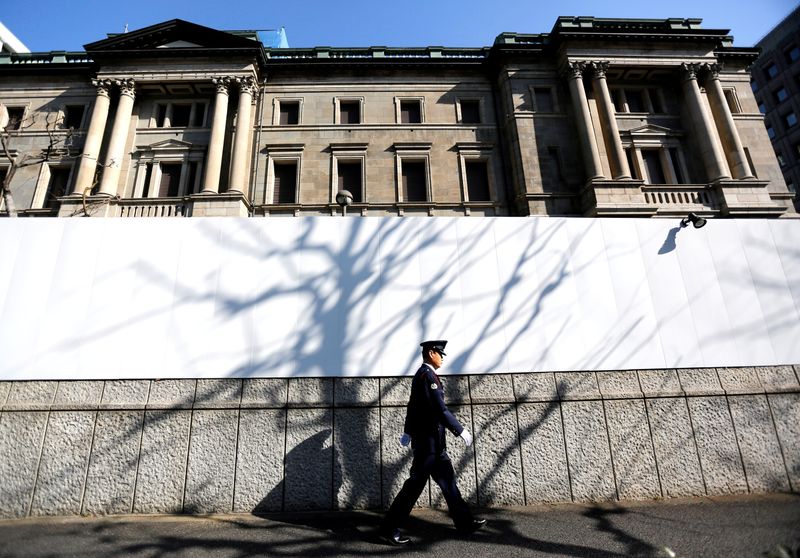By Leika Kihara
TOKYO (Reuters) - The Bank of Japan could ramp up stimulus this month as part of efforts by central banks to prevent the coronavirus outbreak from triggering a global recession.
The U.S. Federal Reserve's decision to cut interest rates in an emergency meeting on Tuesday adds pressure on the Japanese central bank to follow in its footsteps.
But it will be a close call as BOJ has less ammunition than the Fed, with its short-term interest rate target below zero and its balance sheet bloated from years of heavy asset buying.
Below are some options left for the BOJ:
DEEPEN NEGATIVE INTEREST RATES
The BOJ could take its -0.1% short-term rate target deeper into negative territory if any rate cut by the Fed triggers a sharp yen rise that hurts Japan's export-reliant economy.
This will also become a strong option if the G7 statement calls on central banks to jointly cut rates.
But it is a controversial step the BOJ wants to avoid. A decision to adopt negative rates in 2016 was unpopular among the public. Deeper negative rates will also hurt already strained profits of regional banks and may do little to halt yen rises.
BUY MORE EXCHANGE-TRADED FUNDS (ETF)
The BOJ pledges to buy ETFs at an annual pace of roughly 6 trillion yen ($55.55 billion) as part of its huge asset-buying program. It gives itself flexibility on how much it buys on a daily basis, so could step up purchases to calm markets when stock prices tank.
The central bank could top up the amount it pledges to buy annually from the current 6 trillion yen to send a strong message to investors of its resolve to shore up confidence.
But the BOJ's ETF buying has already faced criticism for distorting stock prices. Unlike government bonds, ETFs won't drop off the BOJ's balance sheet unless the central bank sells them - no easy task as any sign of doing so could cause panic among investors accustomed to the BOJ's huge presence.
USE LOAN SCHEMES TO HELP SMALL FIRMS
The BOJ has several loan schemes aimed at encouraging financial institutions to lend more to firms as part of efforts to channel money more directly into sectors in need of funds.
The central bank can use one of the schemes, or create a new program, that provide incentives to financial institutions to lend to small firms and retailers hit by the virus outbreak.
While such a move may not be defined as outright monetary easing, it will rescue firms from a financial crunch.
This may be the most preferred option for the BOJ. But the direct boost to the economy is unclear as many firms already have abundant cash after years of ultra-easy monetary policy.
REVERT TO OUTRIGHT QE
The BOJ now loosely pledges to buy government bonds at an annual pace of roughly 80 trillion yen. But actual buying as slowed to less than half that pace, after the BOJ shifted its policy target to interest rates from the pace of money printing.
Reverting to quantitative easing (QE) would require an overhaul of yield curve control - the BOJ's current policy that guides short-term rates at -0.1% and long-term yields at zero.
Some doves in the BOJ are fans of QE. But it would take a market crash on the scale of the collapse of Lehman Brothers in 2008 for the BOJ to undertake such a big change in policy.
PASS THE BATON TO FISCAL POLICY
With its ammunition depleted after years of failed attempts to fire up inflation, this is the BOJ's standard approach now. Governor Haruhiko Kuroda has said by capping borrowing costs at zero, the BOJ is helping the government boost fiscal spending.
The government is no longer pressing the BOJ for stronger action, on the view monetary policy has exhausted its options and that further action could backfire by hurting commercial banks.
But the BOJ may come under renewed heat for action from politicians, who have always turned to the central bank whenever the economy soured.
